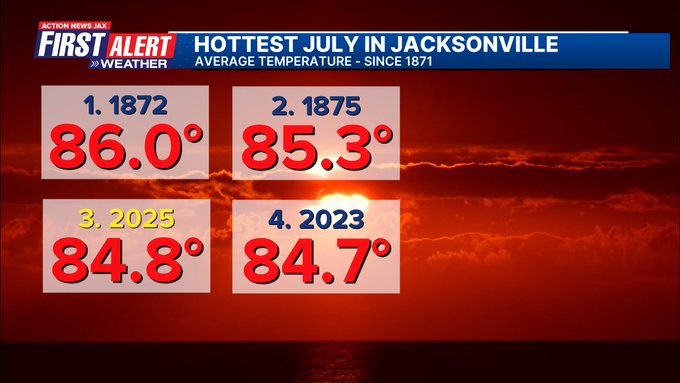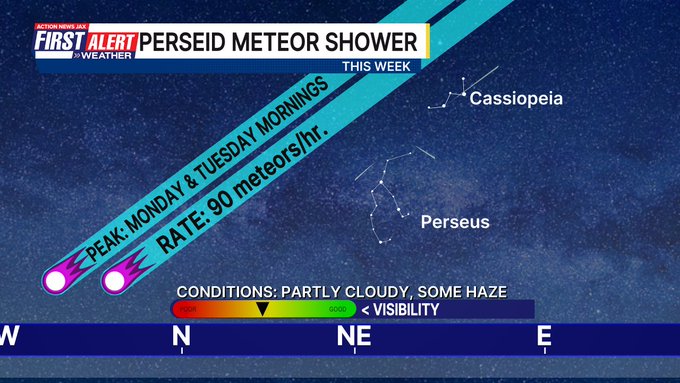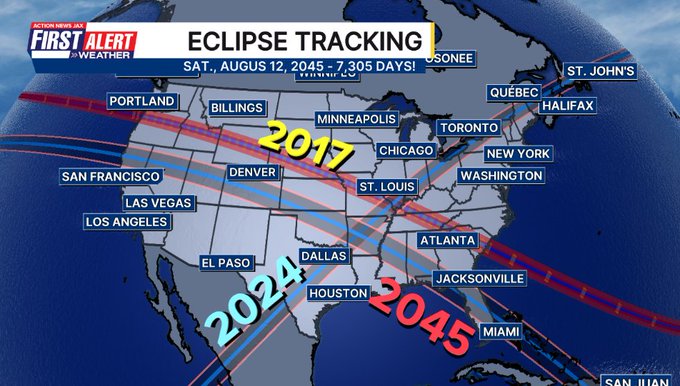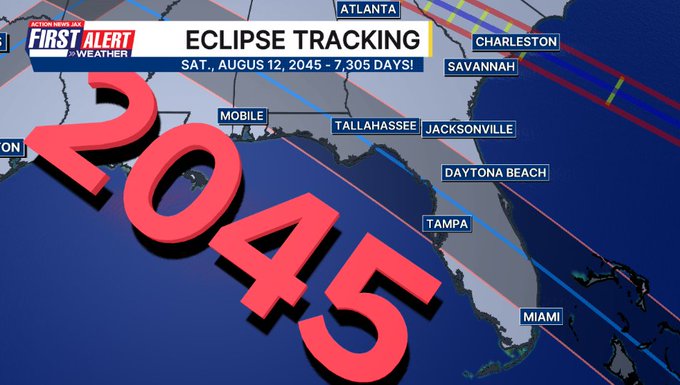JACKSONVILLE, Fla. — The “Buresh Blog” will take a week off returning the week of Aug. 25. Updated every day throughout the hurricane season - “Talking the Tropics With Mike”. I’ve also added to the Florida “Stories of Survival”, the 2024 hurricane season:
To become a part of the First Alert Neighborhood weather station network powered by Tempest - scan below &/or click * here *:
The “summer of discontent” is going to cause some consternation when it comes to utility bills. July was the 3rd hottest July on record in Jacksonville. JEA offers the following on trying to cut down on AC costs:
Heating and air conditioning (HVAC) systems account for almost 50% of your electric bill and can lead to significant increases during periods of extreme weather. Follow our tips and recommended settings to help conserve energy and reduce costs.
- During warm weather, set your thermostat to 78° F. During extreme heat consider raising it a few degrees to allow your AC unit to cycle off.
- Use ceiling fans during warmer months to help keep you cool. Fans can make you feel up to four degrees cooler. Remember to turn them off when you leave the room.
- During cold weather, set your thermostat to 68° F. Only increase the temperature 1-2° at a time to prevent heat strips from turning on.
- Avoid using heat strips to heat your home. They require a lot of energy to run and can cause unexpected bill spikes. Learn more.
- Install a programmable or smart thermostat.
- Set the fan setting on your thermostat to auto. It can create more moisture in your home and make it feel warmer if it’s left on.
- Do not block air vents or returns and keep the exterior portion of your heating and cooling unit free of blockage and debris so your unit can run as efficiently as possible.
- Change air handler filters monthly or as needed. Most filters are designed to last 30 days, but some may be longer.
- Schedule maintenance on your heating and cooling system bi-annually to ensure it’s running properly and as efficiently as possible.
- If you need to replace your heating and cooling system, consider a high-efficiency ENERGY STAR® Certified model.
- Ensure your attic and walls have proper insulation and are sealed to keep warm air out and cool air in.
The annual Perseid meteor shower peaks this week (through Aug. 13th). Just get away from city lights & look up! (light from the moon will interfere some).
From “Sky & Telescope”: “it’s comet109P/Swift-Tuttle. Every 133 years, when it ventures into the inner solar system, the Sun vaporizes a fraction of the comet’s icy nucleus, which is rich in dust and small rock fragments. These spread out along its path to create a ribbon of debris. Every year from mid-July to late August, Earth crosses the comet’s orbit and slams into the particles at some 60 kilometers per second (134,000 mph), so fast they incandesce (become luminous) as meteors. The comet’s trail is broad with a denser core, so we see a smattering of meteors well before maximum, a significant uptick when we plow through the center, and then a decline as Earth speeds away from the swarm. Meteor rates reach a maximum during core passage, which will happen starting Tuesday night, August 12-13."
Speaking of the Heavens....
It’s 20 years - as of Aug. 12th - to the next Great American Eclipse! A good portion of totality will cut across Florida from the Panhandle through Central Florida. The eclipse will cover more than 90% of the sun in parts of Duval with 100% - totality - just to the southwest.

August night skies (Sky & Telescope):
Aug. 12 (morning): Dazzling Venus and Jupiter are less than 1° apart rising above the east-northeastern horizon.
Aug. 12-13 (all night): The Perseid meteor shower is expected to reach its maximum, but the bright waning gibbous Moon will interfere with the show. Some Perseids can be seen one or two nights afterward, when the Moon rises later.
Aug. 16 (morning): In the east, the last-quarter Moon gleams some 3½° to the upper right of the Pleiades.
Aug. 19 (morning): In the east, the waning crescent Moon, Jupiter, and Venus are arrayed in a vertical line about 14° tall around 10° right of Gemini’s twin lights, Castor and Pollux.
Aug. 20 (morning): Look toward the east-northeast to see a thin lunar crescent hanging some 4° upper left of Venus.
Aug. 21 (dawn): The Moon, two days from new, climbs above the east-northeastern horizon with Mercury trailing by around 4½° to its lower right.
Aug. 26 (dusk): Low on the west-southwestern horizon, the waxing crescent Moon is some 6° lower left of Mars.
Aug. 30 (dusk): The almost-first-quarter Moon is back in Scorpius and 4½° lower right of Antares.
Moon Phases
Full Moon August 9 3:55 a.m. EDT (Full Sturgeon Moon; also Full Barley Moon)
Last Quarter August 16 1:12 a.m. EDT
New Moon August 23 2:07 a.m. EDT
First Quarter August 31 2:25 a.m. EDT
After sweeping cuts & hiring freezes earlier in the year, the National Weather Service is back to filling some positions. Story from the New York Times * here *. NOAA site * here * on jobs available.











